The Ultimate Guide to Clothing Colors for Cool Skin Tones

Key Takeaways
**Cool skin tones** have blue, pink, or rosy undertones and glow in silver, icy shades and crisp neutrals. They show up on every complexion, so pay attention to undertone, not skin depth.
💫 Discover Your Complete Color Palette
Ready to discover all the colors that make you look radiant? Our comprehensive color analysis will reveal your complete personal palette - perfect for hair, makeup, and wardrobe decisions.
Take Color Analysis Quiz →Leverage multiple in natural light to affirm your undertone and eliminate guesswork. Give the vein, jewelry, white, and sun tests a shot, then cross reference before revamping your closet.
Base your palette on cool colors that illuminate your skin. Opt for electric blues, royal purples, rose pinks, cool greens, and sharp neutrals such as pure white, dove gray, and charcoal.
Style with purpose to flatter cool tones and bring balance. Match color intensity to your contrast level, mix matte and glossy, and put lighter cool shades near your face.
Build your outfits the easy way with color tricks that always work. Experiment with monochromatic looks in one cool hue, analogous pairings like blue and teal and green, and pops of complementary accents for contrast.
Forget warm, yellow-based shades that fight against cool undertones. If you adore warm colors, keep them subtle accents and match with intense cool neutrals to maintain a fresh skin look.
In particular, look best on cool skin tones are those with blue, pink or violet bases — such as icy blue, cobalt, emerald, true red, fuchsia, lavender and cool gray.
Silver jewelry is usually more flattering on cool undertones than gold. To identify a cool tone, veins appear blue or purple, and skin burns prior to tanning.
Black and crisp white work, warm oranges and mustard can wash out. Up next, an easy-to-follow swatch and pairing guide.
📚 Recent Articles
What is a cool skin tone
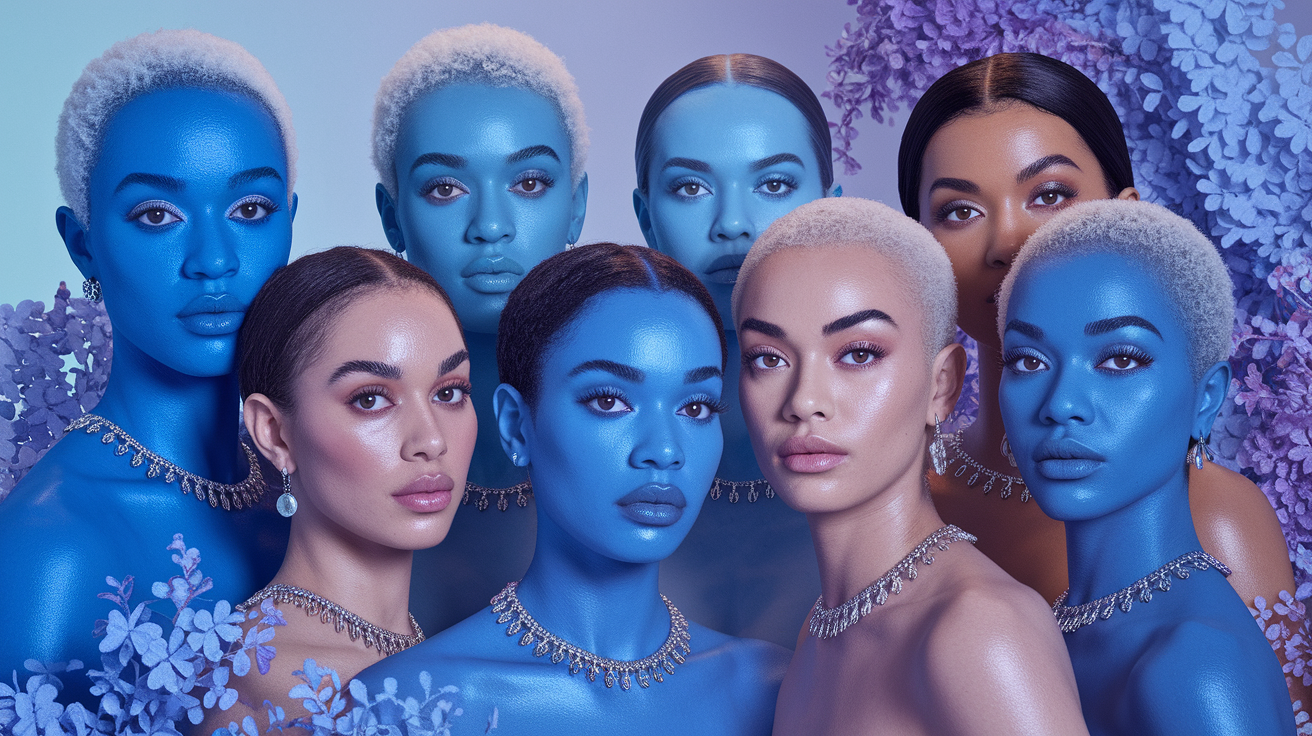
A cool skin tone indicates that your skin reveals blue, pink, or rosy undertones, rather than golden or yellow ones. This undertone is distinct from your skin tone, which refers to the richness—fair, medium, or deep. Undertone reflects the color underneath your overall complexion. Cool undertones manifest as ash, pinky, or rosy and can be found in all tones, ranging from extreme fair to extremely deep. For those with a neutral skin tone, understanding these distinctions can help in making better color choices.
A quick way to identify a cool undertone is by observing how silver jewelry tends to flatter more than gold. Metals with a crisp gleam—such as silver, platinum, white gold, and steel—reflect light in a manner reminiscent of cool undertones. I often think about how a simple silver hoop can make cool skin glow bright and clear, while a chunky yellow-gold chain might cast a muddy tint, especially on those with a warm undertone.
There's a similar concept for color recommendations. Cool skin typically wears best in hues with a blue or pink base. This includes a range of hair colors and clothing shades, from blues like sky to navy, purples such as lilac, violet, and plum, and pinks ranging from blush to fuchsia. These hues mirror the undertone, ensuring the complexion appears vibrant rather than depleted.
Cool neutrals help ground a look. Think charcoal, cool grey, crisp white and navy. All these icy tones—ice blue, cool mint, frosted lavender—have a way of imparting a fresh glow, like winter light on water. For reds, choose blue-based reds: cherry, cranberry, wine. They sound sophisticated and elegant. On lips or ties, these reds communicate vibrancy without hollering.
Earthy colors don't necessarily mean warm tones. Blue-based berry, mauve, and cool taupe can feel grounded while still complementing cool skin. However, it's wise to skip warmer colors like orange, mustard yellow, tomato red, and golden brown, as these can clash with cool undertones and leave a sallow cast, particularly for those with neutral skin.
That said, not every rule is strict. Factors like fit, fabric, and light play a significant role. A crisp cut and a matte, thick fabric can occasionally make an almost-wrong shade work. If you love a warm color, consider keeping it off the face and using it in accessories like shoes or belts, especially in prints that incorporate more cool tones.
It's important to note that some individuals exist in a neutral zone. They may not lean strongly towards cool or warm, requiring caution when selecting colors. Seasonal changes can also affect skin tone, but the undertone tends to remain consistent, even if it appears muted. For those with a neutral undertone, experimenting with a variety of shades can reveal flattering colors.
If you notice both pink and golden undertones, focus on soft, balanced shades such as soft teal, cool beige, or muted raspberry, and test these colors in daylight by a window. Your best colors should enhance your skin's evenness and make your eyes look clear, contributing to a chic hue overall.
How to identify your undertone
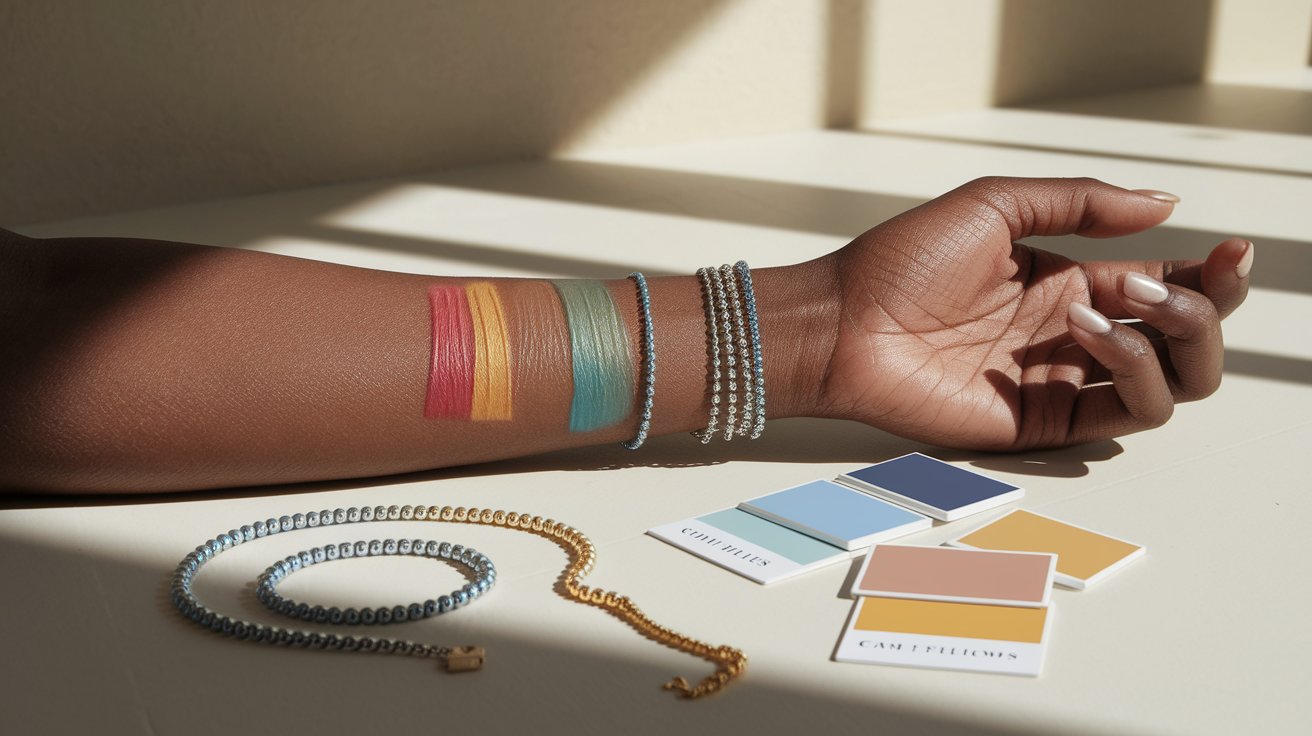
Undertone lies beneath surface color and remains quite constant, even as your skin tans and fades with the seasons. We're generally all divided into three categories—cool, warm or neutral. Nailing it helps you choose hues, precious metals and cosmetics that seem like a natural extension of you, not contrived.
Natural light is crucial. Compare it to the veins on your wrist. Examine your face, neck and inner wrist; they might not be a perfect match, and that's perfectly OK! Use more than one test to determine your undertone. Your score should align across a minimum of two techniques to be comfortable.
The vein test
Flip your forearm over and examine the veins in proximity to the wrist under bright, indirect daylight. If they read blue or purple, that indicates a cool undertone. Green or olive hints warm. A combination indicates neutral.
Check both your wrists. Most of us have subtle variations from one arm to the other, so match and choose the dominant read. Avoid strong indoor bulbs or colored walls that may tint what you see. If necessary, go outside for a minute and re-check.
Write down the finding with a quick note like "Left wrist: blue-purple, cool." Have it on hand when you shop or construct a palette.
The jewelry test
Test a piece of silver and one of yellow gold. If silver makes your skin look bright, clear and calm, that's backs cool. If yellow gold gives you a healthy, golden lift, that leans warm. If they both look good, you may be neutral.
Switch between earrings, a necklace near your face, and a bracelet. Face-adjacent pieces tell you the most, but wrists can verify. Others white gold, platinum, or rose gold—cool tend to like silver, white gold or platinum, warm tend to like classic yellow, neutrals can wear many.
Observe your habits as well. If your collection leans silver without trying, that's a trend is information.
The white test
Hold a plain white T-shirt or piece of paper to your face in daylight. If your skin appears crisp and clear alongside white, that's a cool indicator. If white accentuates sallowness or a yellow cast, that suggests warm.
Now attempt off-white or cream. Cool undertones tend to look blah alongside cream, while warm undertones shine. Neutrals manage both. Let what you see steer tees, shirts, blouses and wedding-guest wear!
The sun test
Consider how your skin acts in sun. If you burn fast and tan slow, that's usually an indicator of cool. If you tan with little burn, that goes warm, a gradual burn-then-tan can be neutral.
Record this alongside your other observations. Then match makeup: cool undertones usually pair well with pink, rosy, or slight violet cues; warm undertones like yellow, golden, or peach; neutrals can flex. Re-test every season, as tone shifts with tan, hydration and skin wellness.
| Test | Cool result | Warm result | Neutral cue |
|---|---|---|---|
| Vein | Blue/purple | Green/olive | Mixed colors |
| Jewelry | Silver/white gold flatter | Yellow gold flatters | Both look good |
| White vs. cream | Pure white brightens | Cream flatters more | Both are fine |
| Sun | Burns quickly | Tans easily | Burns then tans |
The best colors for cool skin tones
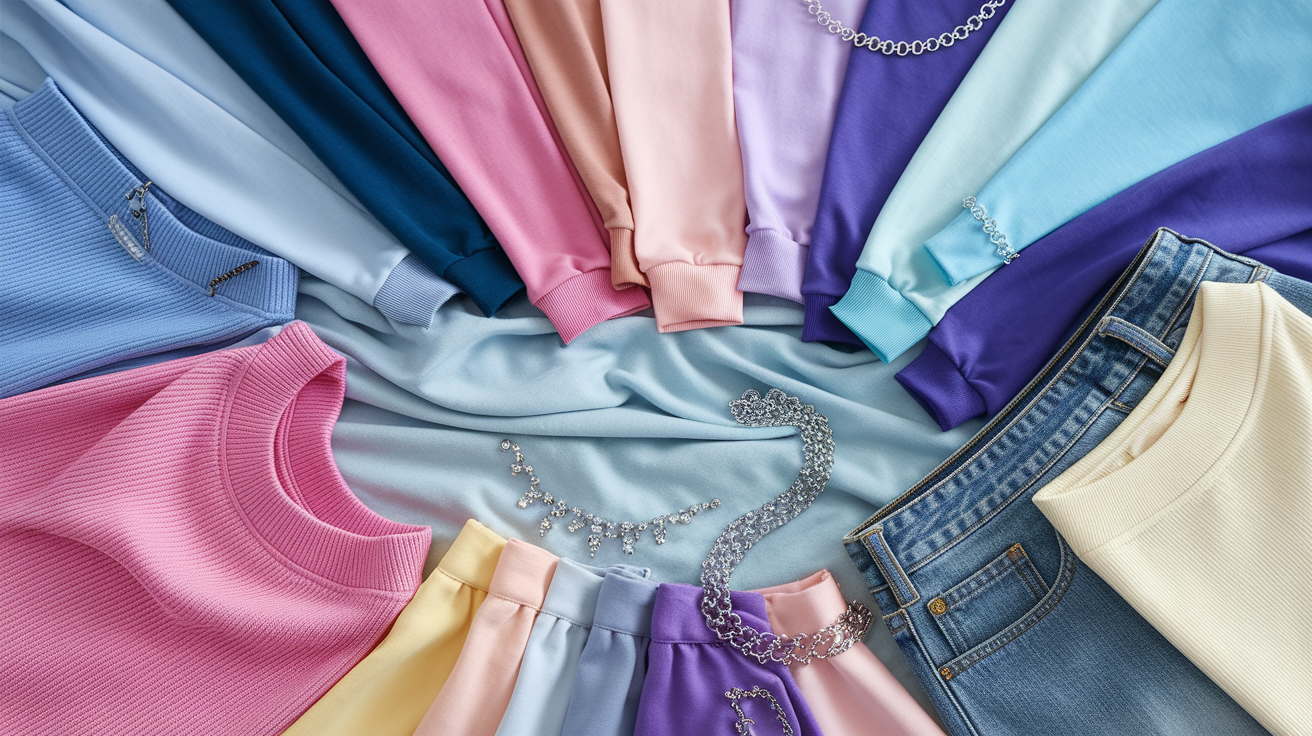
Shoot for colors that have blue, pink or purple base. These complement cool undertones and make skin appear fresh and luminous. Develop them from jewel tones, icy pastels and crisp neutrals, avoiding strong yellow or orange bases that read harsh.
Silver and white gold jewelry sit well here, providing a crisp, mirror-like lift. **Color analysis** can be a helpful guide, but what's most important is that you feel comfortable and confident in your clothes.
- Key enhancers: cobalt, sapphire, amethyst, lavender, plum, fuchsia, blush, icy pink, emerald, mint, teal, pure white, dove gray, charcoal, cool beige, silver
1. Vibrant blues
Cobalt, sapphire, and electric blue are ideal choices for those with a cool complexion. These shades, rich in blue bases, enhance the overall complexion and define facial contours beautifully. This crisp contrast is why many people notice their eyes appear lighter or more defined when wearing these cool hair colors.
Pair these vibrant tones with cool neutrals—like light gray, bright white, or charcoal—for a balanced look. A cobalt blazer over a white tee, navy trousers, and a silver watch creates a chic hue suitable for work or travel.
Use blue as a statement across settings: a sapphire slip dress for evening, an electric blue knit with jeans for day. Even a cobalt bag or scarf jolts a neutral outfit to life.
2. Rich purples
Amethyst, lavender and plum flatter cool skin because they skew blue or red, never yellow. They even out skintones and can highlight the rosy undertones without redness.
Pair purples with gray or navy for an elegant blend. A lavender blouse beneath a navy suit reads cool and crisp. In winter, deep plum gloves or a beanie give that same strong, cool-toned edge.
A simple trick: a purple scarf near the face lifts tired skin fast.
3. Rosy pinks
Pick pinks with blue bases: fuchsia, blush, icy pink. They mimic natural flush and maintain the look fresher, not warmer.
Soft pinks feel gentle, bright fuchsias give punch. Pair a blush shirt with cool gray pants for a subtle, put together ensemble.
If bright pink sounds bold, start small—shoes, a crossbody or a lip that's on the cooler side.
4. Cool greens
Opt for emerald, mint or teal. These blues skew green, which makes them the perfect compliment to warm skin tones.
Navy or charcoal grounds them nicely. Teal sweater and charcoal jeans looks fresh and tidy. Avoid yellow greens like chartreuse or lime – they can battle the skin.
Green earrings or a silk scarf or even a jade ring take eyes up and illuminate your tone.
5. Crisp neutrals
Pure white, dove gray, charcoal and cool beige provide a strong foundation. They provide a crisp backdrop for jewel tones and icy pastels.
Stock basics—trousers, blazers, shirts—in these cool neutrals for easy mix-and-match. For a bold color, cold reds – blue-red cherry or wine — can work, but test it in daylight before you buy to steer clear of any dull cast.
Beyond the color palette
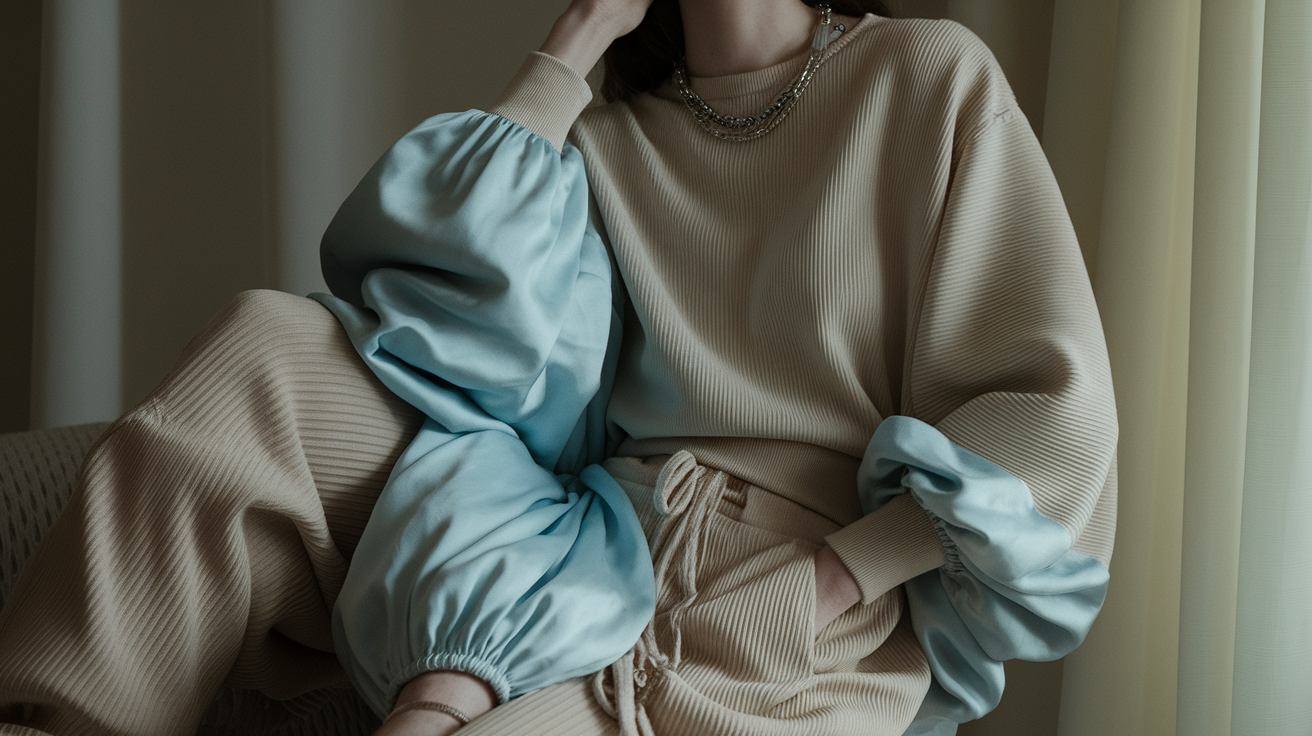
Color is just the beginning. Cool skin tones will look their best when fabric, finish and styling coalesce. Seasonal Color Analysis helps: Summer and Winter are the cool seasons, defined by undertone across skin, hair, and eyes, not by how much they contrast. Some clear season types thrive on high contrast and others look better in softer shifts.
Knowing your undertone first—cool, warm or neutral—steers decisions, then mould intensity, texture and light to suit your lifestyle.
Fabric and texture
Soft luster enhances cold tones. Nothing like satin, silk and fine viscose to make icy blue, teal and emerald look fresh near the face. A smooth, cool gleam reflects softly off skin, assisting even in low light.
For range, select wool, cashmere or denim in cool hues. Imagine charcoal cashmere, navy merino, slate denim. They read silent in summer air‑con and nuzzly in winter. Matte knits quiet b**right colors**. Tight weaves keep tones sharp.
Combine matte and glossy so that outfits have dimension. A silk shell beneath a tweed blazer. Patent loafers, brushed-wool skirt. It is the contrast, therefore, which prevents cool palettes from feeling flat.
Add textured accessories when you need interest without the color overload. A quilted navy bag, a gray ribbed scarf, a silver-grain belt. If you adore earth tones—olive, taupe, or stone—opt for cooler iterations or distance them from your face.
Color intensity
Consider more than just the color gamut. If your hair, brows and eyes pop against your skin, you can wear high-contrast combos (ink and optic white). If your features mix toffee and caramel, keep shifts soft (dusty blue with dove gray).
For low-key days, go muted: sage, mist, sea glass, soft lilac. For impact, reach for jewel tones: sapphire, amethyst, ruby, and emerald. Winters can manage crisp, intense color. Summers must soften those edges.
Pair brights with cool neutrals — charcoal, navy, graphite, cool beige. That keeps a bold teal dress or cobalt blazer from bleaching you out.
Tone saturation control by setting. Work begs for mid-intensity. Evenings invite sheen and deeper hues. Use the 80/20 rule: 80% core cool neutrals, 20% accents that fit your mood.
Light and shadow
Layer light and dark cool tones to create form. A pale blue shirt beneath a midnight coat adds clean structure with no fuss.
Reserve lighter cool shades to be close to your face. Ice pink, pearl gray and glacier blue elevate the complexion on camera and in daylight. A thin cool-white collar will sometimes do.
More than the color scheme. Charcoal pants or a deep teal skirt assist in anchoring prints and framing lighter tops.
Go for a tonal gradient. Begin with ice blue at the neck, drift through cornflower, cascade down to navy shoes. It feels controlled, contemporary and deliberate. Earth tones can chime in as cool stone or pewter belt for soft contrast.
Create stunning cool toned outfits
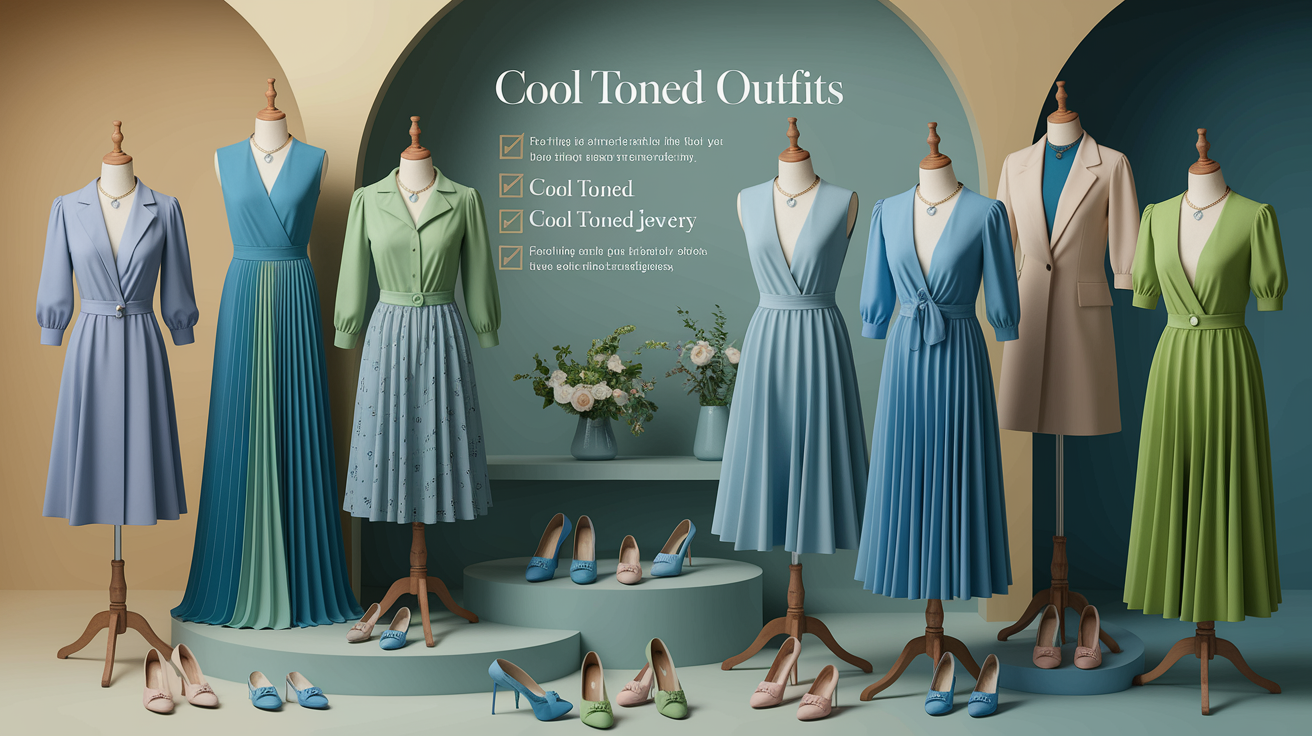
Construct around cool hues with blue or pinkish undertones, then anchor them with sharp neutrals and an exact pop. Soft white, rose beige, taupe, and rose brown maintain equilibrium while flattering colors for neutral skin tones shine. Silver metal elevates the look without heating it up, providing a chic hue.
Monochromatic looks
Dress head-to-toe in one cool color, but change the intensity. A deep navy coat, mid-blue shirt and pale blue trousers feel sophisticated yet serene. On gentler days, pale pink with mauve and a hint of lavender caresses skin with lightness and gentleness.
Texture saves monochrome outfits from going flat. Imagine glossy satin with brushed wool, ribbed knit with smooth cotton, or matte leather juxtaposed with silk. The eye detects motion, even when the color remains contained.
Match accessories to hue, not shade. A plum bag with mulberry shoes, a berry scarf around the face, and a cool silver watch complete the tale.
- Navy: pair ink shirt, denim blue pants, slate belt.
- Plum: mix plum blazer, mauve knit, mulberry skirt.
- Baby blue: add powder shirt, sky pants, ice-blue scarf.
- Mint: wear mint blouse, seafoam pants, pale sage coat.
- Lavender: layer lavender dress, lilac cardigan, soft grey tights.
- Burgundy: style dark burgundy suit, berry silk top, wine boots.
- Charcoal: anchor with charcoal suit, steel tee, smoke sneakers.
Analogous pairings
Blue, teal and green, of course, sit side by side on the wheel, so fall together with no clash. Work baby blue, mint and seafoam for day. Or transition from dark blue to teal to pine for night.
Keep edges soft with draping fabrics. Chiffon, fine wool and washed denim make colors seep. Muted pastels–pale pink, baby blue, mint green–suit cool summer types who require softer hues.
For work, a navy suit, teal shirt and silver tie stays cool yet crisp. Go easy on the casual – mint knit, pale blue jeans and grey sneakers. For a soft, romantic mood, rely on berry accents like plum and mulberry with lavender, mauve and pale blue — think English garden.
A pocket color wheel can spark new chains: blue–teal–green, lavender–mauve–plum, cool grey–silver–ice blue.
Complementary accents
As opposites add snap. Combine navy with an accent of clear watermelon red, or plum with a splash of mint. Accents should be added with care so undertones remain cool. It could be a belt or a lip or a shoe.
Silver, gunmetal or pewter shoes and jewelry tie contrast back to coolness. Think deep raspberry earrings with navy, or a burgundy bag against pale blue.
- Pick one main cool base, then one opposite accent.
- Keep accent under 20% of the look by area.
- Keep contrast away from face if bold; near face if soft.
- Use cool metals (silver) to bind both sides.
- Choose cool versions of complements: blue with blue-based red, plum with icy green.
- Check eye color: grey, green, or hazel pop with cool blues and pretty pinks.
Colors you might reconsider
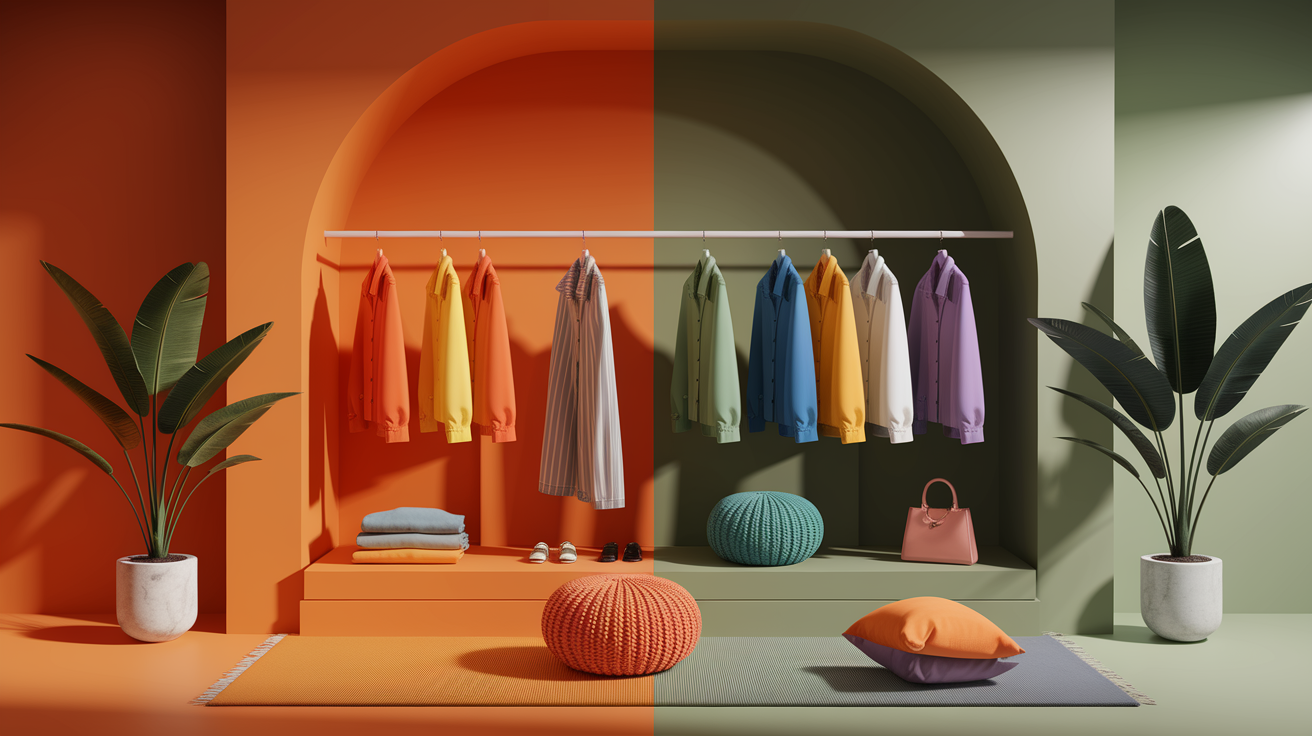
Cool undertones tend to pop next to clean, blue-based colors, while warmer tones can clash, creating a drab appearance. The key is to choose flattering colors that enhance your overall complexion, allowing skin, eyes, and hair colors to appear vibrant and translucent.
Reevaluate warm brights and golden families
Orange, marigold, butter yellow, mustard, warm camel and tawny browns can sit heavy on cool skin. They radiate warmth that your undertone doesn't have, which can turn skin sallow or gray or even a little bit green.
A lot of folks, too, feel that really in-your-face hues—acid yellow, neon coral or fire-engine orange—wash out the face regardless of undertone. If you dig energy, opt for cooler brightness instead. You still get the punch without the conflict.
Watch out for colors near your skin value, too. If a hue is nearly as deep as your face, it can blur rather than frame features. Selecting a cooler contrast makes the face read crisp.
Limit earthy, muted, and golden tones
Earthy greens – think olive, moss, and celery lean yellow. On cool skin, they smother your inherent pink or blue undertones. If your hair is ashy brown, these cool greens can suck the life out of it, making it appear flat.
Golden beige, honey tan, rust and pumpkin sit in the warm lane and can make cool skin look tired. When it comes to neutrals, go for the gray-based options—cool taupe, slate, charcoal, or soft navy.
If you like green, opt for pine, emerald or teal with blue bases — these maintain the lift while remaining friendly to cool undertones.
Test warm shades in smaller hits
When a color delights you, don't throw it away. Use it in small doses away from the face: a belt, shoes, a bag, or a print with more cool color than warm.
Mix in warm earrings in metals that flatter cool skin — silver, steel or white gold — to counter the heat. If a warm top beckons, tone it down with a cool scarf at the neck or a starchy white collar.
The same idea helps with makeup: swap golden bronzer for a cool contour, and balance a warm blouse with cool pink or berry lips. Always try it out in daylight.
Hold the color up close to your face, see if you find shadows or a dull cast, then switch to the cool cousin and observe the lift. This quick test does the trick for neutral undertones as well, who should stay clear of extremes on either side.
| Warm color to reconsider | Cooler alternative |
|---|---|
| Orange, coral | Blue-red, cherry, berry |
| Mustard, marigold | Lemon ice, cool canary, icy chartreuse |
| Warm camel, honey tan | Cool taupe, mushroom, stone |
| Rust, pumpkin | Cranberry, burgundy, wine |
| Olive, moss | Emerald, teal, pine |
| Butter yellow | Icy pastel yellow, pale mint |
| Golden beige | Pearl gray, slate, soft navy |
| Acid yellow, bright blue | Icy yellow accents, navy or cobalt in softer value |
Conclusion
All in all, cool skin glows beside blue, green, pink and true red. Silver jewelry illuminates the face. Deep navy and charcoal construct crisp appearances. Soft lilac and mint bring in calm charm. Warm orange or mustard can tone down the radiance, so experiment first.
To keep it real, try a navy shirt, cool denim and white sneakers. Trade in gold hoops for silver studs. Top it off with a rose lipstick or a berry balm. For work, opt for a charcoal suit with a fresh white shirt. For night, opt for a cobalt dress and a red lip.
To seal it, try on clothes in daylight, take pictures, and observe what compliments. Prepared to prune your combination! Post a look, request quick tweaks.
Frequently Asked Questions
How do I know if I have a cool skin tone?
Look at your veins in natural light. If they appear blue or purple, you likely have a cool undertone, making cooler skin tones more suitable for flattering colors like silver jewelry, which tends to complement your overall complexion.
What colors flatter cool skin tones the most?
Opt for blue-based shades that complement cooler skin tones. Experiment with sapphire, emerald, and icy pink, along with true red and cobalt, as these colors light up your overall complexion beautifully.
Which neutrals should cool skin tones wear?
Go for cool neutrals like charcoal, cool navy, slate, taupe, and crisp white, while avoiding warm tones like beige or camel that can flatten out cooler skin tones.
Do cool skin tones look better in silver or gold?
Silver typically complements cooler skin tones better, while white gold, platinum, and rose gold can look stunning on those with neutral skin tones, though yellow gold might be too warm unless it's very pale.
Can cool skin tones wear black?
Yes. True black tends to be flattering on cool undertones, while a deep espresso with a cool base can complement those with a neutral skin tone.
What makeup shades suit cool skin tones?
Wear cool foundations with pink or neutral bases to complement your overall complexion. Pick rose or berry blush for a flattering color choice. For your lips, experiment with blue-red, raspberry, or mauve shades that suit cooler undertones.
Are there warm colors cool skin tones can still wear?
Yep, go for cooler versions of warm hues, like a muted mustard with a green base, while balancing them with flattering colors and cool neutrals to maintain harmony in your overall complexion.